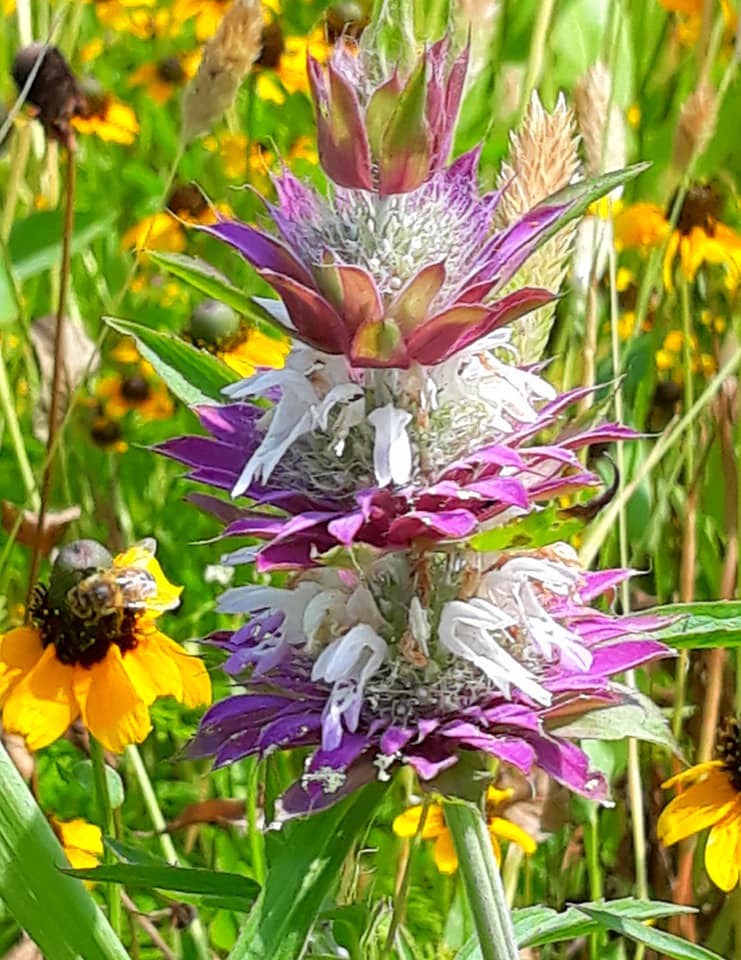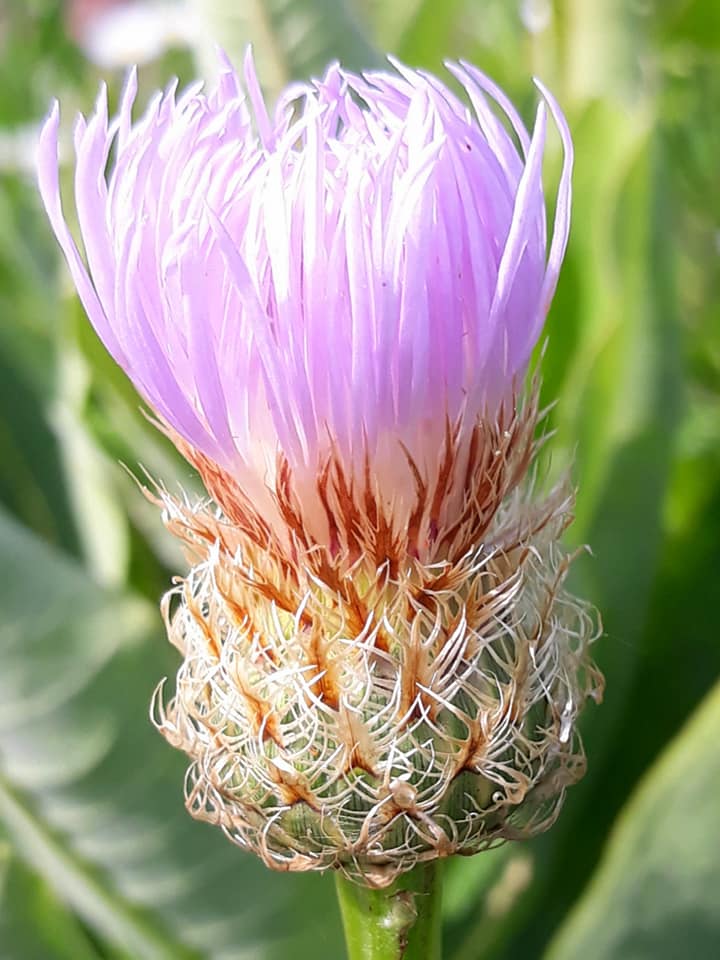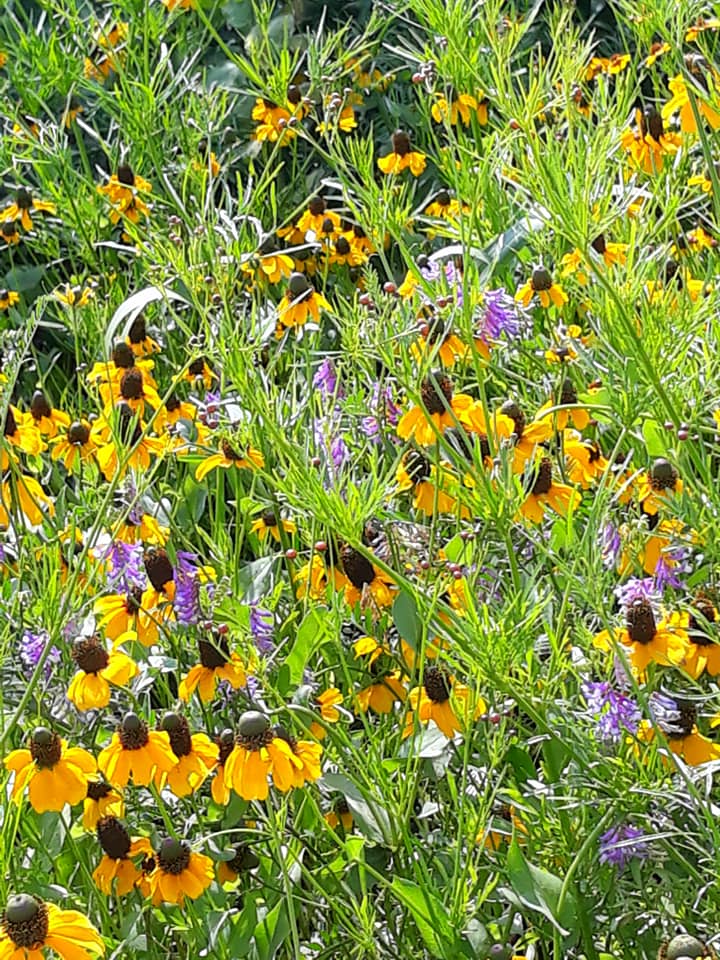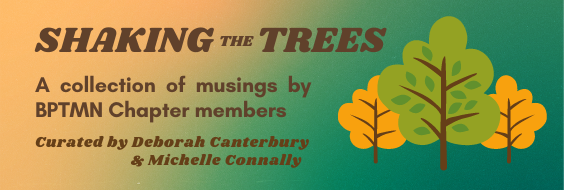By Karen Glenn, BPTMN; Submitted by Patricia Crain, Class of 2018


Large properties, such as Hagerman National Wildlife Refuge, can do big things to build habitat and provide support for birds, wildlife, and pollinators in our area. A larger property has many options. Entire sections of habitat may be managed, thanks to a dedicated work force and heavy equipment like tractors and excavators, which support larger projects. They provide major support for our local wildlife. Smaller property owners may not have access to all these options, but they can still make a substantial impact on the local flora and fauna by providing native vegetation that local food webs count on. Think of smaller properties as steppingstones between larger sections of native habitat. Species often need a place to rest or forage when moving from one area to another, but as humans we tend to create sterile environments around our homes. If an insect shows up, or we see a leaf chewed on, it is normal to reach for the pesticides. We want to eradicate anything/everything that threatens the perfect order we work hard to maintain around our abode. If a weed pops up in the lawn, it must go. We tend to want a perfect monoculture, uniform and trimmed, to show others we care about our property.
Unfortunately, very few things can survive in a monoculture, but this is the way we style our modern lawns. Somehow, we have lost sight of the fact that extensive lawn care is a relatively new thing for this land. The first lawns were manicured golf courses and huge estates, where there was labor available to do the work necessary to beat back unwanted plants. Thomas Jefferson is credited as one of the first to replicate a manicured lawn at his Monticello Estate at the beginning of the 19th century. Most individual landowners used their yards to grow vegetable gardens or feed livestock at the time. It is easy to forget lawn mowing was not widespread until recently, when lawn equipment became affordable and designed for smaller properties.
Individual lawn mowing became widespread only in the past 60-75 years. The first rotary powered lawn mowers became available in the late 1940’s, and since then we have cleared off most of the plants that nature depends on and replaced them with nonnative grasses, forbs, and trees. The seeds of invasive plants have entered our natural areas, causing even more loss of the forage plants our local ecosystem depends on. If each of us adds a few of the important native plants here and there, we can provide a scaffolding system of support to help species get from one fragmented habitat to another. This can make an enormous difference in the success of native flora and fauna. Think of your property as a steppingstone in between available habitat. Your addition may be the difference in survival of numerous species, by providing food and shelter in areas where native plants have been all but eliminated. We can all support native pollinators and songbirds in small ways that add up to big impacts on our local species. Doug Tallamy, one of my favorite authors, refers to this concept as “Homegrown National Park.” I highly recommend his books if you are interested in joining this project.
If you are interested in rewilding a smaller property, there are two basic paths you can choose. The first path is more direct, expensive, and labor intensive. It works best for smaller properties, like traditional lawns and requires removing nonnative plants entirely and replacing them with native species where possible. It may or may not be successful, depending on the soil, insect communities on property, and other ecological factors, but it is quick and efficient. Even small yards can make a big difference by establishing a pollinator garden and/or creating edges around an existing lawn. These plantings are by choice, quickly set up, and the rewards are easy to observe. Container gardening can work with limited spaces, such as a patio or the balcony of an apartment. No space is too small to have influence. What takes time to develop are all the inter-relationships between the soil, plants, and animal species. One thing for sure, if you grow it, they will eventually show up. It may take a year or two, but you will start to see how the plants are being utilized by the local fauna. That hard part is seeing eaten leaves as a sign of success, rather than harm!


Larger spaces can become expensive and labor intensive to convert to native landscape over a season. For this reason, we picked a more natural, passive rewilding strategy. Plants have been introduced naturally on Sticker Hill, through the seed dispersal systems found in nature. Many of the reintroduced natives were planted by birds within the first couple of years. The birds, joined by wind, ants, and even small mammals, such as mice and squirrels, add new plantings to the mix over time. The animals in the habitat will quickly bring in the native plants they forage on. Most of us in this area live on small fragments of Blackland Prairie, often intermixed with hardwood forests, making up the Cross Timbers Ecoregion, which used to cover north Texas and southern Oklahoma. Sticker Hill is situated on a small strip of the Cross Timbers region, so we concentrate on having a diverse mixture of native trees and prairie plants.
While slower, I have found this more passive method results in a diverse community of native plants that are used right away. New additions grow quite well and have usually been in place a couple of seasons by the time I find them! Of course, this method requires patience and a change of perspective from what looks good to our eyes to what works best for the habitat. I move some plants around to other places on the property slowly, over time, after identifying them, learning about their growth habits and their place in the ecosystem, and observing their preferred growing conditions on this property. We save seeds from the more desirable volunteers. Getting to know what is already present on my small fragment of habitat helps me to recognize invasive species when they appear, which is another important task when restoring native species. The earlier they are removed, the better!
The first two years of rewilding were quite difficult on my eyes and shifting perspective. Pioneer plants are usually the first to arrive. These are often dispersed by the wind and tend to be annual, weedy, and opportunistic. It took about 3-5 years for some of the more desirable annual and perennial plants to become established. We are now in the eighth year since we began allowing the place to go back to nature, and the rewards are enormous. Most of our time is spent walking around taking pictures, discovering new species, thinning out areas that are overgrown, and selectively removing woody plants, which tend to begin taking over the habitat within 5-7 years. Observing succession as it occurs and helping to shape the plant community is a relaxing pastime. Developing a close relationship to one’s own piece of land gives time to slowly learn new plants, which is much less intimidating than trying to learn about hundreds of native plants that may be found in our area! One may adjust as they go. Apps, like iNaturalist, take the guess work out of identifying plants, which has made rewilding much easier than the days of having to key down every plant or find a local expert!
My main focus is native pollinators, especially bees, which tend to prefer flowers from three huge plant families providing food for birds and pollinators in north Texas: the Asteraceae (composite, or sunflower family), the Fabaceae (legume, or bean family), and the Rosaceae (rose family, which contains most of our fruit trees, vines, and shrubs). These three large families provide both humans and wildlife with important nutritional resources. They come in a variety of sizes, growth forms, and blooming times, which makes them excellent members of a native habitat. There are numerous specialized relationships between pollinators and other plant families, but these three are great to start with.
On morning walks this month, the bumble bees have been working hard gathering pollen and nectar from the bright yellow patches of Partridge pea (Chamaecrista fasciculata). This native annual has formed thick patches interspersed with the tall gaura in the pastures. It happily reseeds itself each year. Partridge pea leaves host the larva of many butterfly species. This plant appeared early and has become well-established in the pastures.


The partridge pea’s cousins, the Illinois bundleflower (Desmanthus illinoensis) and the yellow puff (Neptunia lutea), are relative newcomers to the property. All three of these members of the legume family support many pollinators with their bright yellow flowers. As a bonus, small mammals and birds forage on the seed pods, which are quite edible. The roots of these native legumes help add nitrogen to the soil. The bean family is highly diverse, and its members make excellent additions to the native landscape. From trees and shrubs to small, delicate plants, like the yellow puff, there are bound to be useful members of this family that will work well in your own native plantings. I encourage you to get out there and see how many you may already have lurking about the place!


Read more about Karen Glenn’s Rewilding Project;
Subscribe to the monthly Friends of Hagerman Featherless Flyer for more nature articles like this.



